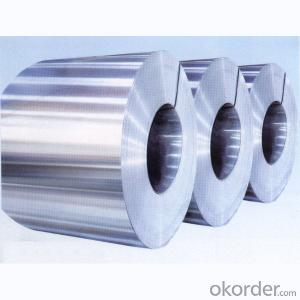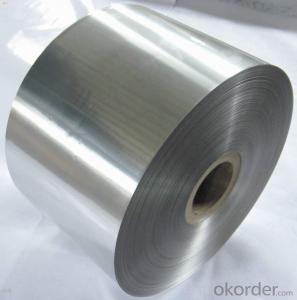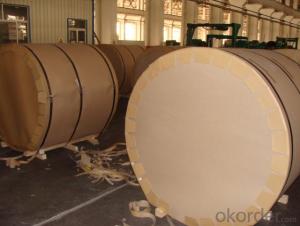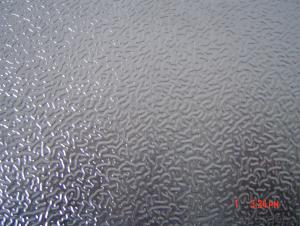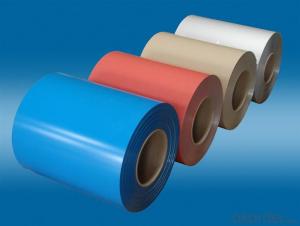AA1060 Aluminum Coils used on Construction
- Loading Port:
- Shanghai
- Payment Terms:
- TT or LC
- Min Order Qty:
- 5 m.t.
- Supply Capability:
- 10000 m.t./month
OKorder Service Pledge
OKorder Financial Service
You Might Also Like
Item specifice
1.Structure of AA1060 Aluminum Coils used on Construction Description
AA1060 Aluminum Coils used on Construction has great ductility, heat conductivity, anti-corrosion and moisture resistance properties.
AA1060 Aluminum Coils used on Construction is widely used for PP cap stock, hot rolled thick plate, aluminum curtain wall base plate, the traffic sign ,air-conditioner heat and exchangers.
2.Main Features of AA1060 Aluminum Coils used on Construction
a.Competitive price---We have our own mills and can produce mill finished aluminium coils, so we can control the production cost better.
b.Professional after-sale service---We have more than 15 years exportation experience and you need not worry about the exporation problems.
c.Fast delivery time---We can control the delivery time within 35 days.
3.AA1060 Aluminum Coils used on Construction Images
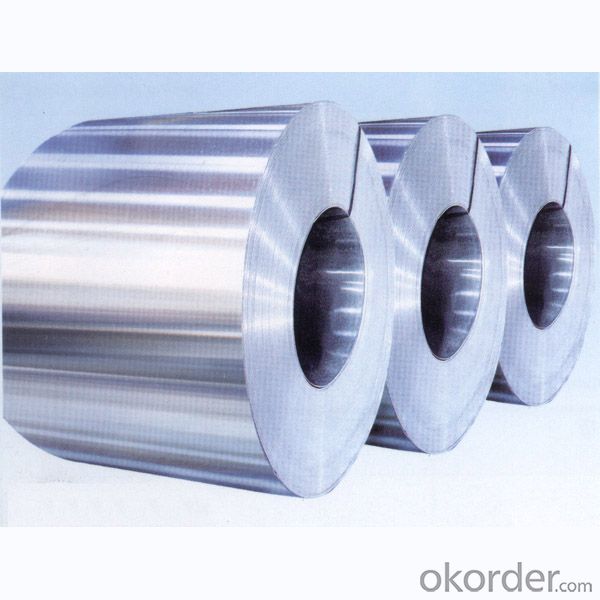
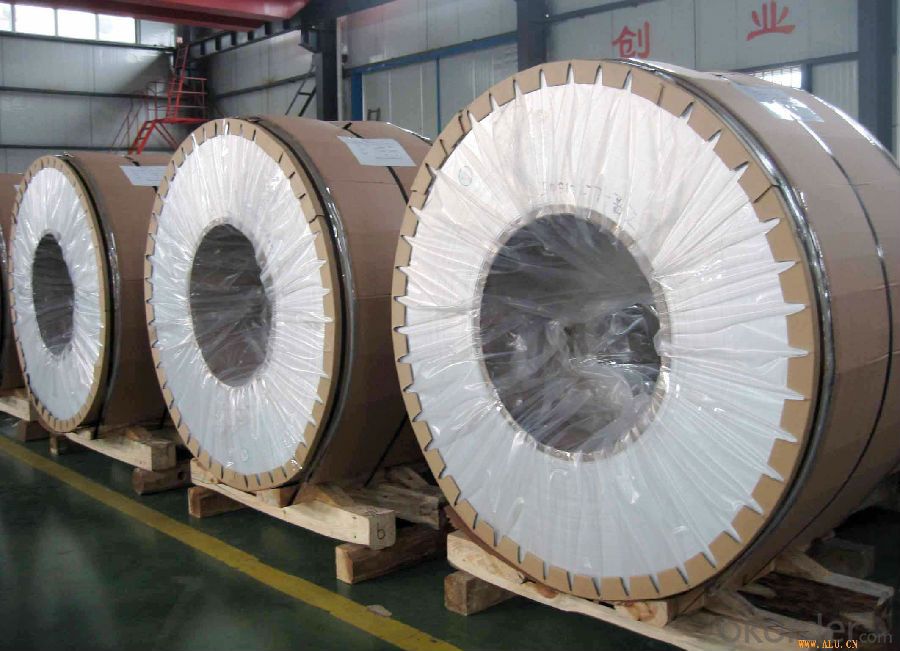
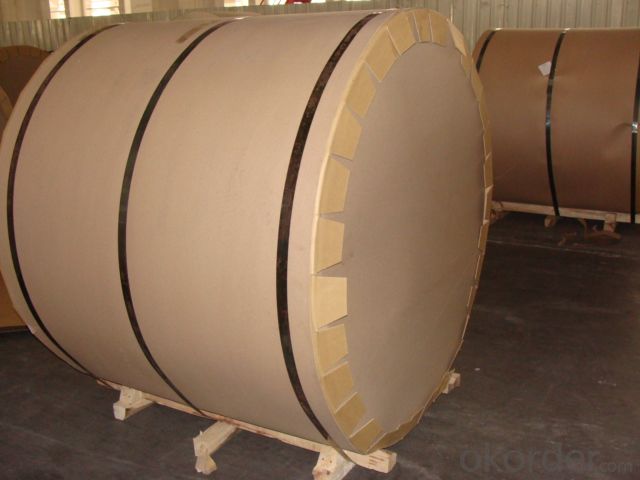
4.AA1060 Aluminum Coils used on Construction Specification
Alloy | A1060 |
Temper | H14, H16, H18, H22, H24, H26, H32, O/F |
Thickness | 0.2mm -- 100mm |
Width | 30mm -- 1700mm |
Standard | GB/T 3880-2006,EN |
5. FAQ of AA1060 Aluminum Coils used on Construction
A.How to guarantee the quality?
Customers are welcome to our mill to visit and check the products. Besides, we can arrange a third party to test AA1060 Aluminum Coils used on Construction.
B.When will you deliver the products?
AA1060 Aluminum Coils used on Construction will be delivered within 35 days after receiving advanced payment or original L/C.
- Q:And what are the advantages/disadvantages of steel aluminum in building cars?Which would be better for building cars?
- Erm im no expert, bt I dont think aluminum is very strong, thus not very safe for a car!
- Q:like i need a good slogan for aluminum its for a school project like for arsenic's is Arsenic's a sure fire way to deal with a rat, It works better than a mean old cat!
- Aluminum: Keeping stoners amazed for over 50 years!
- Q:How do aluminum coils compare to galvanized steel coils in terms of longevity?
- Compared to galvanized steel coils, aluminum coils typically have a longer lifespan when it comes to longevity. Aluminum is naturally resistant to corrosion, meaning it is less prone to rust or deterioration over time. As a result, aluminum coils are widely chosen for outdoor purposes, including roofing, siding, and HVAC systems, as they can endure harsh weather conditions while maintaining their structural integrity. In contrast, galvanized steel coils are coils made of steel that are coated with a layer of zinc as a protective measure against corrosion. Although this zinc coating offers some degree of protection, it can eventually wear away, especially in areas with high humidity or exposure to saltwater. Once the zinc coating is compromised, the underlying steel becomes vulnerable to rust and corrosion, significantly diminishing the lifespan of galvanized steel coils. Consequently, if longevity is a primary concern, aluminum coils are typically a more resilient and enduring option compared to galvanized steel coils. Nevertheless, it is crucial to take into account other factors such as cost, specific application requirements, and maintenance needs before reaching a final decision.
- Q:Are aluminum coils suitable for gutter systems?
- Indeed, gutter systems find aluminum coils to be quite suitable. Given its durability, lightweight composition, and exceptional resistance to rust and corrosion, aluminum stands as a favored selection for gutter systems. This cost-effective alternative can endure severe weather conditions while boasting an extensive lifespan. Furthermore, the installation and maintenance of aluminum coils prove to be effortless, rendering them an optimal choice for gutter systems.
- Q:Cost of aluminium coil coating fluorocarbon paint?
- Hello, fluorocarbon paint according to the use of distinction: external wall fluorocarbon paint, aluminum, fluorocarbon paint, metal fluorocarbon paint, steel, fluorocarbon paint. According to industry standards to distinguish: GB products, non GB products.
- Q:How are aluminum coils tested for quality?
- To ensure compliance with the necessary standards, a variety of methods are employed to test the quality of aluminum coils. Trained personnel conduct visual inspections to identify any visible defects, such as scratches, dents, or surface imperfections. Likewise, dimensional inspections are carried out, utilizing precision instruments to measure the thickness, width, and length of the coils. This guarantees that the coils are manufactured within the specified tolerances. Furthermore, mechanical testing is performed to evaluate the strength and durability of the aluminum coils. Tensile and yield strength tests measure the maximum load a coil can endure without breaking or deforming, while bend tests assess flexibility and resistance to cracking. Moreover, chemical composition analysis is conducted to verify the purity and consistency of the aluminum material. Spectroscopy techniques, such as atomic absorption or emission spectroscopy, are commonly employed to determine the exact elemental composition of the coils. Coating tests are also conducted to assess the quality of any protective or decorative coatings applied to the aluminum coils. These tests include adhesion testing, corrosion resistance testing, and evaluation of color consistency. In addition to these conventional methods, advanced non-destructive testing techniques are utilized to detect any internal flaws or defects in the coils. Ultrasonic testing, eddy current testing, and X-ray inspection are employed to identify hidden defects without causing damage to the material. Ultimately, a combination of visual, dimensional, mechanical, chemical, and non-destructive tests ensures that aluminum coils meet the necessary quality standards before being utilized in various industries, such as construction, automotive, or electronics.
- Q:What are the different coil handling options available for aluminum coils?
- There are several coil handling options available for aluminum coils, depending on the specific requirements and preferences of the user. Some of the commonly used options include: 1. Coil Cradles: These are horizontal racks or frames on which the aluminum coils are placed. They provide support and stability to the coils during storage or transportation. Coil cradles are available in various sizes and designs to accommodate different coil dimensions. 2. Coil Cars: Coil cars are mobile platforms equipped with lifting mechanisms that allow for easy movement of aluminum coils. They are commonly used in manufacturing facilities where coils need to be transported between different processing stations. Coil cars can be manually operated or automated, depending on the level of automation desired. 3. Coil Turnstiles: Coil turnstiles are rotating devices that hold multiple coils vertically. They allow for easy access to individual coils without the need for heavy lifting or rearranging. Coil turnstiles are ideal for high-volume production environments where quick coil changeovers are required. 4. Coil Upenders: Coil upenders are specialized equipment used to rotate or flip aluminum coils to change their orientation. This is particularly useful when a coil needs to be loaded or unloaded from a vertical position, or when certain processes require a specific coil orientation. 5. Coil Lifters: Coil lifters are a type of lifting device specifically designed to handle aluminum coils. They typically feature adjustable arms or clamps that securely grip the coil, allowing for safe and efficient lifting. Coil lifters come in various configurations, including manual, semi-automatic, and fully automated models. 6. Coil Tippers: Coil tippers are used to tilt or incline aluminum coils for various purposes, such as facilitating coil feeding into processing machines or enabling easier coil inspection. They can be operated manually or powered by hydraulic or pneumatic systems. 7. Coil Stackers: Coil stackers are used to neatly stack and store aluminum coils vertically. They typically feature adjustable arms or forks that can be raised or lowered to accommodate different coil sizes. Coil stackers help optimize storage space and ensure easy access to coils when needed. These are just a few examples of the coil handling options available for aluminum coils. Each option offers its own advantages and may be suitable for different applications or industries. It is important to carefully consider the specific requirements and constraints before selecting the most appropriate coil handling solution.
- Q:What are the potential applications of coil-stucco aluminum coils?
- Coil-stucco aluminum coils have various potential applications due to their unique properties. They are commonly used in the construction industry for roofing, siding, and facades, as their stucco surface provides enhanced durability and weather resistance. These coils are also used in the manufacturing of appliances, such as refrigerators and ovens, as well as in the automotive industry for trim and decorative purposes. Furthermore, coil-stucco aluminum coils can be utilized in the packaging industry for containers and cans due to their lightweight and corrosion-resistant nature.
- Q:What are the common methods of joining aluminum coils together?
- There are several common methods of joining aluminum coils together, depending on the specific application and desired outcome. One commonly used method is welding, which involves melting the edges of the aluminum coils together using heat. This can be done through various techniques such as gas tungsten arc welding (GTAW) or gas metal arc welding (GMAW). Welding provides a strong and durable joint, but it requires skilled operators and can be time-consuming. Another method is adhesive bonding, where a specially formulated adhesive is applied between the aluminum coils to create a bond. Adhesive bonding is often used for lightweight applications and can provide excellent strength and flexibility in the joint. However, it may require surface preparation and curing time for the adhesive to fully set. Mechanical fastening techniques such as riveting or bolting can also be used to join aluminum coils. Riveting involves inserting a rivet through holes drilled in the coils and then deforming the rivet to secure the joint. Bolting, on the other hand, involves using screws or bolts to hold the coils together. Mechanical fastening methods provide a strong joint and can be relatively quick to implement, but they may require additional hardware and can result in stress concentration points. Additionally, another method is using a crimping or roll forming technique. This involves applying pressure to the aluminum coils using specialized machinery to create interlocking joints or folds. Crimping or roll forming is often used for joining aluminum coils in roofing, siding, or gutter systems. It offers good strength and weather resistance, but it may require specific equipment and expertise. In conclusion, the common methods of joining aluminum coils together include welding, adhesive bonding, mechanical fastening, and crimping/roll forming. Each method has its own advantages and considerations, so the choice of joining method should be based on the specific requirements of the application.
- Q:My favorite deodorant contains aluminum. It smells really good and it works really well.My mom doesn't like me using it because it contains aluminum.So I got aluminum free. It doesn't smell at all (I can't seem to find fragrant aluminum free deodorant) and it doesn't work as well, for some reason.I want to keep using the one with aluminum, but will it be harmful to me in the future?
- all of my deodorants have aluminum in them. practically every deodorant that works out there has aluminum in it. the only one i know of that DOESN'T have aluminum is Tom's Natural and it doesn't work at ALL. See the aluminum is the key ingredient that stops you from sweating and stops odor, that's why it works so much better than your new aluminum-free one. But then again, use it wisely, because it's linked to alzeimer's, brain cancer, etc.
1. Manufacturer Overview |
|
|---|---|
| Location | |
| Year Established | |
| Annual Output Value | |
| Main Markets | |
| Company Certifications | |
2. Manufacturer Certificates |
|
|---|---|
| a) Certification Name | |
| Range | |
| Reference | |
| Validity Period | |
3. Manufacturer Capability |
|
|---|---|
| a)Trade Capacity | |
| Nearest Port | |
| Export Percentage | |
| No.of Employees in Trade Department | |
| Language Spoken: | |
| b)Factory Information | |
| Factory Size: | |
| No. of Production Lines | |
| Contract Manufacturing | |
| Product Price Range | |
Send your message to us
AA1060 Aluminum Coils used on Construction
- Loading Port:
- Shanghai
- Payment Terms:
- TT or LC
- Min Order Qty:
- 5 m.t.
- Supply Capability:
- 10000 m.t./month
OKorder Service Pledge
OKorder Financial Service
Similar products
New products
Hot products
Hot Searches
Related keywords
